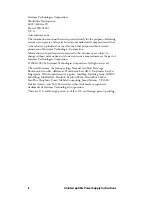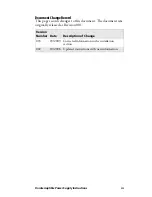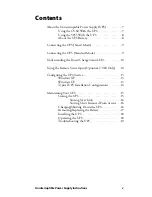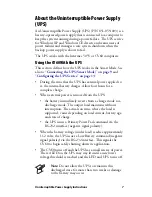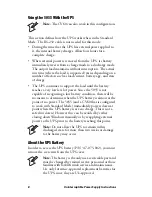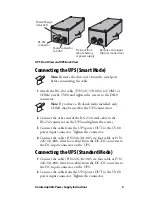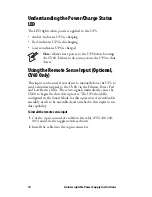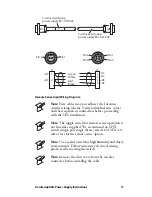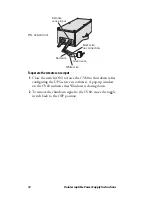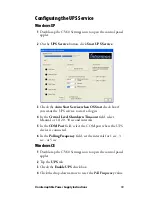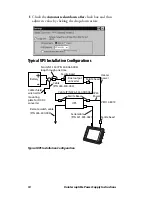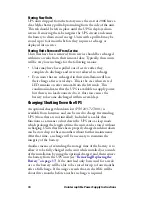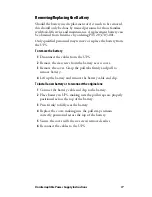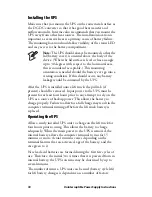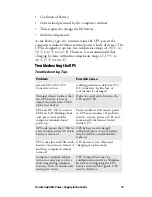
Uninterruptible Power Supply Instructions
7
About the Uninterruptible Power Supply
(UPS)
An Uninterruptible Power Supply (UPS) (P/N 851-059-003) is a
battery-operated power supply that is connected to a computer to
keep the system running during a power failure. The UPS service
for Windows XP and Windows CE detects and warns users of
power failures and manages a safe system shutdown when the
backup power supply is about to fail.
The UPS works with the Intermec 5055 or CV60 computers.
Using the CV60 With the UPS
This section defines how the UPS works in the Smart Mode. See
also to
“Connecting the UPS (Smart Mode)” on page 9
and
“Configuring the UPS Service” on page 13
:
• During the time that the UPS has external power applied to
it, the internal battery charges. Allow four hours for a
complete charge.
• When external power is removed from the UPS:
• the battery immediately reverts from a charge mode to a
discharge mode. The output load maintains without
interruption. The actual run time, where the load is
supported, varies depending on load current, battery age,
and state of charge.
• the UPS issues a Primary Power Fail command via the
RS-232 interface (negative signal polarity).
• When the battery voltage (under load) reaches approximately
11.2 volts, the UPS issues a Low Battery command (negative
signal polarity) via the RS-232 interface. This signals the
CV60 to begin safely shutting down its application.
• The CV60 turns off and the UPS has a small reserve of power.
The red LED on the UPS may stay lit until a new lower
voltage threshold is reached and the LED and UPS turns off.
Note:
Do not allow the UPS to remain in this
discharged state for more than two weeks or damage
to the battery may occur.


